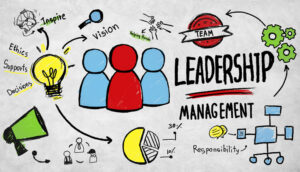Change is inevitable, but some changes are bigger than others – especially when it comes to introducing new technology, merging with another business, or overhauling shift patterns.
These are the sort of changes that impact everyone and, if managed badly, have the potential to see good staff running for the door.
Our consultants panel have shared their tips and advice for contact centre leaders to help manage big changes well, so they get buy-in and take everyone on the journey with them – instead of impacting staff retention or employee engagement.
Here are 17 top tips for managing big changes well in the contact centre:
1. Explain WHY the Decisions Are Being Made

If change is inevitable, then it means there are reasons for the impending change.
As leaders it’s natural that we should be savvier about what those reasons are. We have the advantage of receiving explanations on why the decisions are being made and where the business is headed.
For that reason, the company can count on our buy-in as leaders. It’s not always easy to swallow, but we understand the reasons and consequences.
So, how do we then get buy-in from our teams? We include them too, just like we’ve been included. We use the information we have to paint the same picture to the teams so they understand why these changes are happening as well.
2. Use Inclusive Language
It’s not enough to just explain what’s happening and why… We must use inclusive language too. Instead of saying “we have some changes to make around here”, we say “we’ve got some decisions to make”.
Just by phrasing it differently, you immediately create a “we’re in this together” atmosphere, sharing the choices and how we got here. If I hear “we’ve” got decisions to make, I feel closer to the business and more valued, and more likely to accept changes, even when difficult to swallow.
So, if there is change coming, be sure to paint the picture clearly for everyone, and use language that says “we’re a team”.
Contributed by: Clayton Drotsky, Director of Growth Crew Ltd
3. Make Sure the Changes Are True to Your Culture

Define what your culture of customer service is (you probably have this somewhere already) and once you have that North Star, you need to use it as a point of reference when making changes.
Of course, there will always be disruption when bringing in new software or merging with another company, but if you can double-check that the friction is aligned with the overall company vision, it will make it a lot easier for everyone to accept and move forward.
4. Eliminate Any Concerns in Advance
Get your teams in a room to talk about the changes before they happen – particularly any concerns or problems they envisage along the way.
This will help them to feel their voice was heard, as well as giving you a reasonable opportunity to eliminate as many of the concerns as possible before rolling out the changes.
5. Focus on Speed to Happiness
One of your greatest opportunities is to focus on “speed to happiness”.
As you plan for the upcoming changes, for example adding a new software package, take the time to think about what resources and time you need to commit to create the most optimal speed to happiness and make everyone feel comfortable as soon as possible.
Contributed by: Shep Hyken, Chief Amazement Officer (CAO) at Shepard Presentations LLC
6. Lead With a Compelling Case for Change
In leading significant changes in the contact centre, a leader’s role is paramount. To make meaning, leaders must:
- Explore Their Role in Change – Leaders must own the process, understanding their unique place in driving the change.
- Own the Change Messaging – Clear communication with the team is key. Leaders must articulate why changes are happening and ensure alignment with the overall change strategy.
- Create a Compelling Case for Change – By actively addressing questions like “Why are my people struggling with uncertainty and ambiguity?”, leaders can craft a convincing argument for the need to change.
7. Promote Psychological Safety
Creating the right environment can make or break change management. To create the climate, leaders should:
- Understand Their Cultural Impact – Leaders must recognize the culture they create and make it a safe space where people feel supported.
- Promote Psychological Safety – Encouraging open communication and ensuring that employees feel secure in expressing their feelings can answer the question “Why do my people feel fearful and unsupported?”
8. Balance Honesty With Optimism

Dialogue fosters understanding and commitment. To develop dialogue, leaders must:
Encourage Radical Candour and Leadership Optimism – Balancing honesty with optimism can open lines of communication.
Explore Transparent Conversations Compassionately – By addressing “Why are my people feeling unsupported and negative during this change?”, leaders can find compassionate ways to guide their teams.
Contributed by: Rob Clarke, Director and Co-Founder of Elev-8 Performance
9. Provide Training and Support
Equip employees with the necessary skills and knowledge to navigate the changes effectively. Offer comprehensive training sessions to ensure a smooth transition to new technologies, processes, or work arrangements.
Ongoing support, coaching, and resources will help build employees’ confidence and competence in the new environment.
10. Recognize and Reward

Acknowledge and celebrate the efforts and achievements of individuals and teams throughout the change process.
Recognizing employees’ adaptability, resilience, and contributions fosters a positive atmosphere and reinforces the idea that their commitment is valued and appreciated.
11. Create a Feedback Loop
Establish a feedback mechanism that allows employees to share their experiences, challenges, and suggestions as the changes unfold.
Regularly gather feedback through surveys, focus groups, or one-on-one discussions. Use this feedback to make necessary adjustments, address concerns, and fine-tune the transition strategy.
Contributed by: Giuseppe Venturini at adooa
12. Hinge Everything on Constant Communication

In the late noughties, Michelle Barton and Kathleen Sutcliffe studied firefighting teams in the US. They wanted to understand why some wildfires are well controlled while others run amok and cause millions of dollars of damage.
They discovered that firefighting is the art of managing complexity, and the best firefighters constantly re-evaluated conditions and strategies.
Successful “Burn Bosses” built a deep understanding of the vagaries of the fire by listening to their firefighters.
They found that the best fire chiefs actively sought disparate views from everyone around them, talking to their staff at different locations. Successful firefighting relies on the constant flow of that knowledge.
The opposite behaviour is prevalent in fires that get out of hand. The management teams are high-handed, don’t ask for opinions, keep themselves to themselves and call all the shots. Those fire chiefs don’t have access to all the data, so they don’t adapt to changing circumstances.
Culturally, there is nothing special about fighting fires. It doesn’t matter if you are fighting fires or managing change in a contact centre, situations change, and problems and issues arise.
If you want your change to succeed, constant communication between the project team and the centre floor may be the most critical feature.
Contributed by: James Lawther, Director of Squawk Point Consulting, and author of ‘Managed by Morons’
13. Clocks, Clarity and Choices
Change management is a big subject, but communication, communication, communication is at the heart of it.
The big decisions to look at are:
- Clocks – When is the right time to reveal, to involve, to ask, to tell, to detail, to change anything which affects the individual. As ever, planning and thinking through the detail are key so you can communicate clearly.
- Clarity – It’s difficult when it’s often unclear what the full picture is. How do you give clarity? By planning the communication detail, testing the FAQ, testing the landing plan and feedback routes. Learn to change the change rapidly with feedback. You can’t always say what you know as a leader, but you can always be honest. “I know but I can’t tell you” is better than an “I don’t know” which is shown later to be a lie.
- Choices – People want to be involved in changes and can engage if involved. You, as leader, have to choose when to involve who in what. Removal of choice feels like stress.
14. ‘Ignore Everything Immediately’ in a Sale or Acquisition
One particular type of big change is sale or acquisition. Practice makes perfect and you get better at it. My top tips would be to “ignore everything immediately”, as follows:
Ignore
Ignore anything that was said by an acquirer before the acquisition. What they know changes after acquisition; who knows what changes and so the context and decisions change rapidly. No plan survives contact with the enemy!
Everything

It’s better if everything changes on acquisition. Don’t leave people in the same jobs, doing the same things the same way as before.
Give people the training, resources and time to change what they do and how they do it. But do it now! Have a close-down party for the acquired business: celebrate and get everyone started in their new roles under the new brand, doing new stuff.
Immediately
Communicate and implement the changes at the earliest opportunity. When you research why acquisitions fail and the best people leave, it’s down to a lack of detail.
A lack of advance planning results in lack of clarity, creeping disaster, and typical factions of “blue and red” people from the old and the new company.
Contributed by: Peter Massey, MD & co-founder at Budd UK Ltd
15. “Yesterday I Knew How to Do My Job… Today I Do Not!”

It’s hard enough to manage change in any environment, but here in 2023, the changes are many, rapid, and at least somewhat unpredictable.
I often quote an employee whose company was making some major changes at the time: “Yesterday I knew how to do my job; today I do not.”
In mid-2023, we might also say, “Yesterday, I knew where I would be working and what tools I’d be using; today I do not.”
I use VIRSA as an acronym for the necessary elements of managing organizational change. It stands for Vision, Incentives, Resources, Skills, and Action Plan.
- Vision – Managers need to make sure their contact centre changes are aligned with organizational goals and have a clear view of where they are headed.
- Incentives – Incentives need to be aligned with employee experience (EX). WIIFM (“What’s in it for me?”) has always been important, but with the current emphasis on EX, it takes on even more weight and required care. Employees can pull changes if they can clearly see the benefits they will derive from those changes.
- Resources – While simultaneously trying to control costs and upgrade or change technologies, it’s important not to lose sight of the need for resources to prepare and implement change.
- Skills – If employees are expected to change both the work they do and the way they work, they need to get the training, preparation, and coaching they need to acquire the needed skills and put them to use.
- Action Plan – If employees sense – or see – that there isn’t a clear plan of action, it is likely that the desired changes will be delayed and resisted.
To paraphrase Marshall Goldsmith and Mark Reiter, “What got us here won’t get us there.” The way changes are made and managed has to be reconsidered along with all the other changes happening inside and outside organizations.
Contributed by: Roy Atkinson, CEO and Principal Advisor at Clifton Butterfield LLC
16. Make Resilience Part of Your Contact Centre Culture
The realization is that change is neither good nor bad; change happens, and how we choose to act when change comes makes all the difference.
Key to this is rooted in the question “How do we act daily so that when larger changes arrive, those changes do not sink our mental ships into chaos?”
Change is the most constant of all the things that happen in life and breeds too much fear, all because we choose to refuse delivery on the fact that change happens, and our choices drive how change influences us.
Some think changing a software system is a momentous or significant organizational change. And it is, except it is also a bunch of small mental shifts, hence the reality that there are no “Big Changes”.
There is no “big change” or “little change”. This misnomer is one of the first realities that must be addressed squarely. Mentally, daily, sometimes minute-to-minute, do we choose to embrace change or skirt change?
Our internal mental space is the first and most critical aspect for “managing change” in a contact centre. Some try to call this resiliency, and to an extent, this is true; one must train the mind to be resilient.
We must choose, for in choosing, we experience consequences, and how we evaluate those consequences decides so much more than mere current events.
Once we have our mental space in order, accepting that change happens, the next step is to toughen our mental resiliency through experience.
17. Get Comfortable With Discussing How You Have Failed

GI Joe was often saying, “Knowing is half the battle.” What was left unsaid was “Doing is the other half of the battle.” Guess what? Practice will be required to lead change, and the best leaders are first learners who accept they will fail.
Are you comfortable discussing how you have failed, how you are learning, and sharing the journey with those you lead? How you approach the daily changes truly determines the destiny of the organization.
Contributed by: Dr M. Dave Salisbury, COO at D&C Consulting LLC
We have got some more great articles from the experts that you should read next:
- Bottom Quartile Management – How to Boost Your Lowest Performers
- 25 Ways to Proactively Spot Your Customers’ Pain Points
- What Are the Main Call Centre Pain Points, and How Can They Be Solved?
- 35 Surefire Ways to Demotivate Your Best Agents
Author: Megan Jones
Reviewed by: Jo Robinson
Published On: 27th Sep 2023 - Last modified: 18th Nov 2025
Read more about - Call Centre Management, Change Management, Clayton Drotsky, Communication Skills, Culture, Dave Salisbury, Giuseppe Venturini, James Lawther, Leadership, Management Strategies, Peter Massey, Rob Clarke, Roy Atkinson, Shep Hyken, Training and Coaching





































